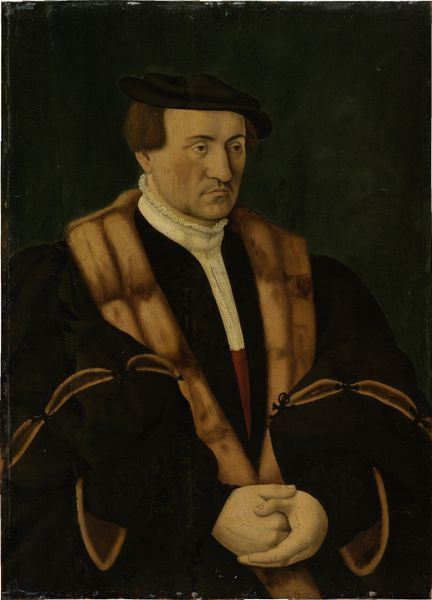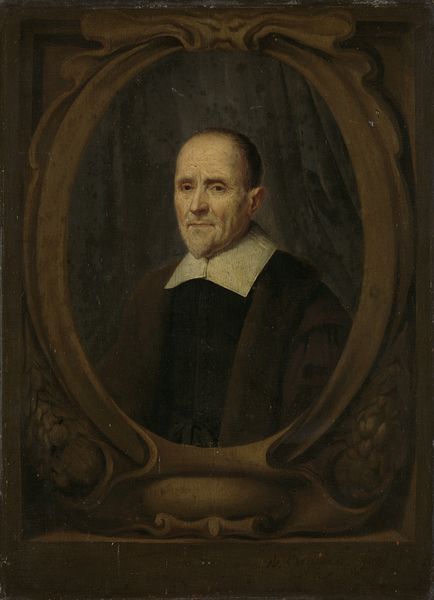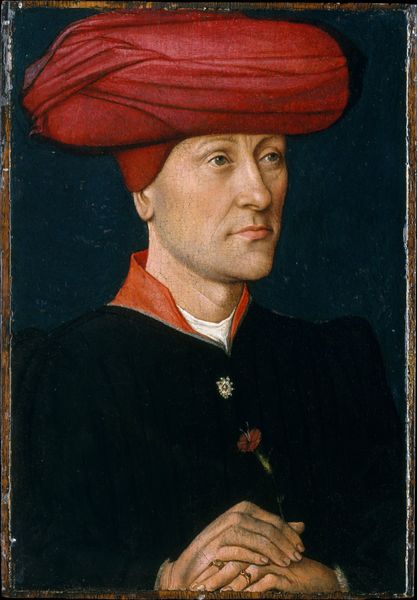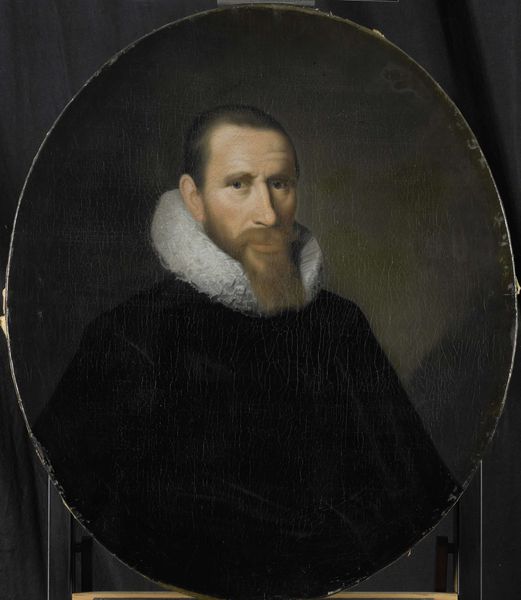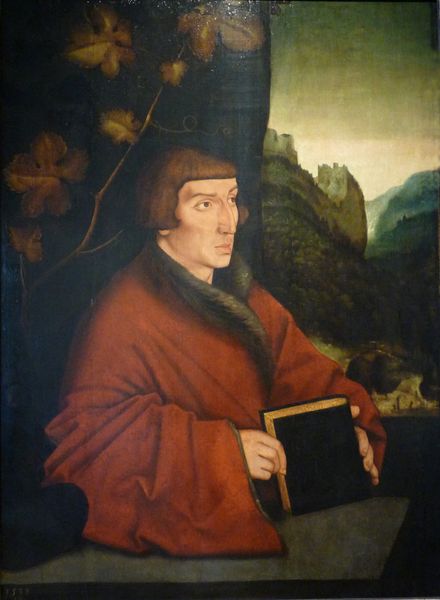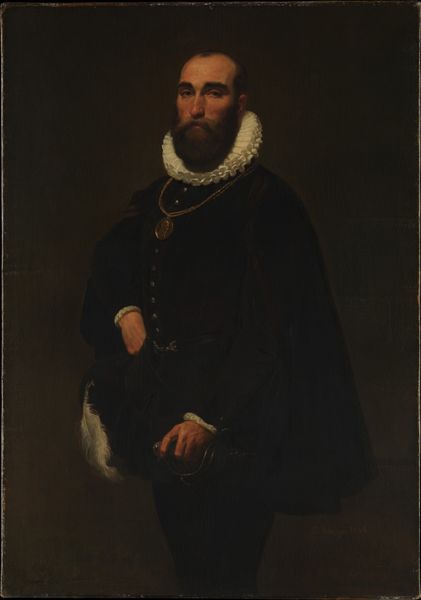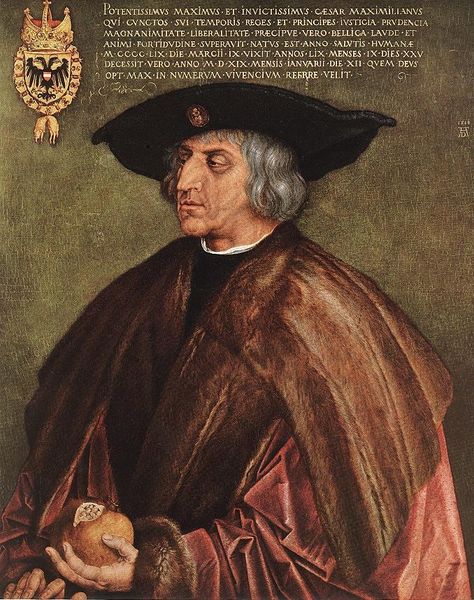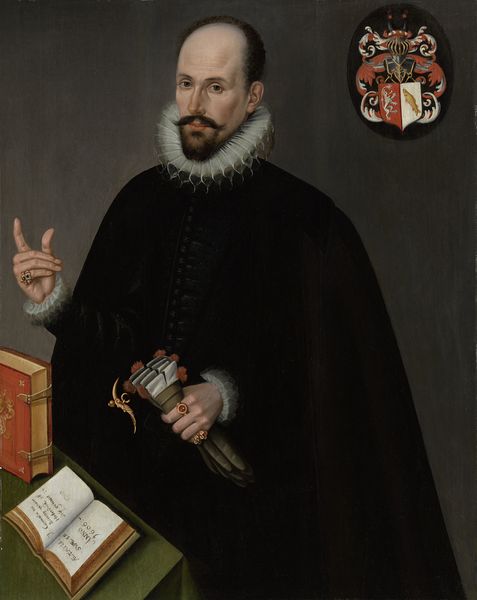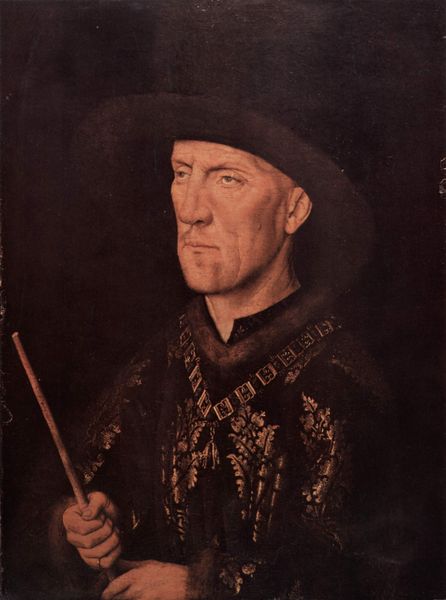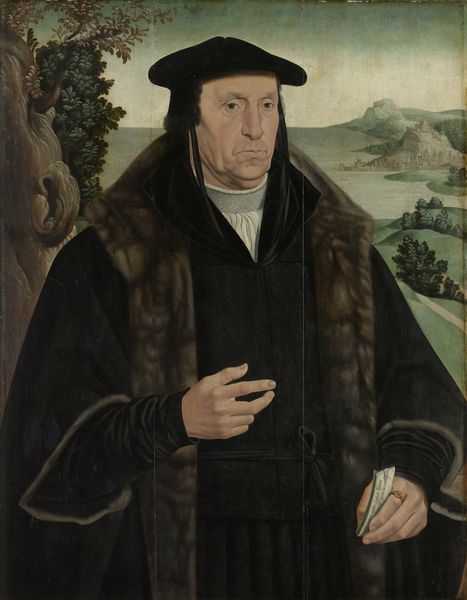
oil-paint
#
portrait
#
oil-paint
#
11_renaissance
#
oil painting
#
history-painting
#
northern-renaissance
Dimensions: support height 150 cm, support width 113 cm
Copyright: Rijks Museum: Open Domain
Curator: Before us is a portrait from before 1600, currently housed in the Rijksmuseum: "Edzard I (1462-1528), Count of East Friesland." The anonymous artist worked in oil paint, likely commissioned to commemorate the Count. Editor: There’s a stark stillness to it, isn’t there? The muted tones and careful arrangement create a mood of solemnity. He’s positioned behind what looks like a ledge or sill, a barrier between us and him. Curator: Absolutely. As Edzard ruled East Friesland during a tumultuous period, navigating complex political landscapes and Reformation ideals, I wonder about the message embedded in the solemnity you've noticed. Look at the inscription; what story is it telling? Editor: The inscription…it's integrated into the base, becoming part of the compositional structure. See how it anchors the figure. The brushwork on his face is very precise. Notice how the light catches the sharp angles of his face. Curator: Indeed, but consider that severe, almost austere, depiction of Edzard and contrast it with the luxurious furs, golden chain, and jeweled ring that adorn him. How do these symbols of wealth and power reconcile with the historical context of peasant revolts during his reign? Does the portrait betray a tension? Editor: The formal contrasts definitely intensify the work. It's intriguing how the textures – the smooth, almost porcelain skin against the rough fur – draw the eye. There’s an emphasis on linear form here as well. Even his hands, so rigidly posed, contribute to this controlled geometry. Curator: Precisely. It may be that we can interpret these stark visual choices through an understanding of gender roles of leadership during this time. A "strong leader" meant maintaining a kind of control and power. But perhaps there is a certain weakness also on display. What are your final thoughts? Editor: On second glance, I appreciate how the artist has managed to portray a certain... vulnerability beneath the surface of authority through subtle variations in tone and texture. Curator: For me, this painting brings up the ever-present question of what any portrait, whether ancient or contemporary, can really reveal about its subject, considering all the nuances of social context and power.
Comments
No comments
Be the first to comment and join the conversation on the ultimate creative platform.

